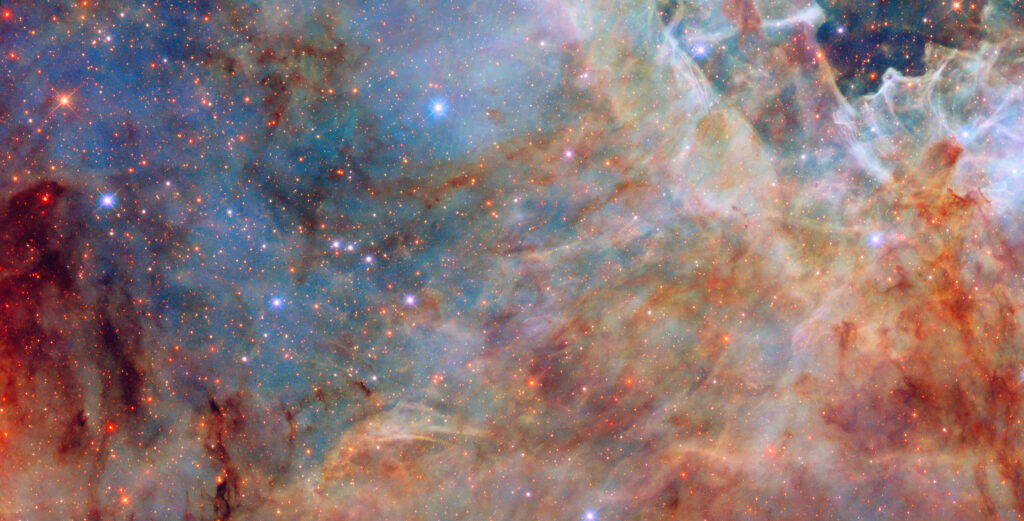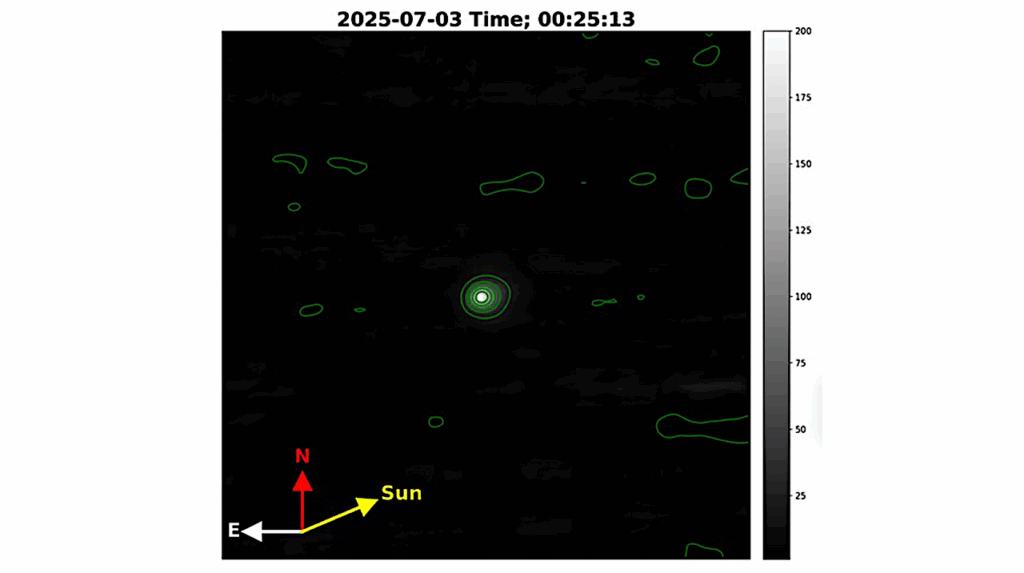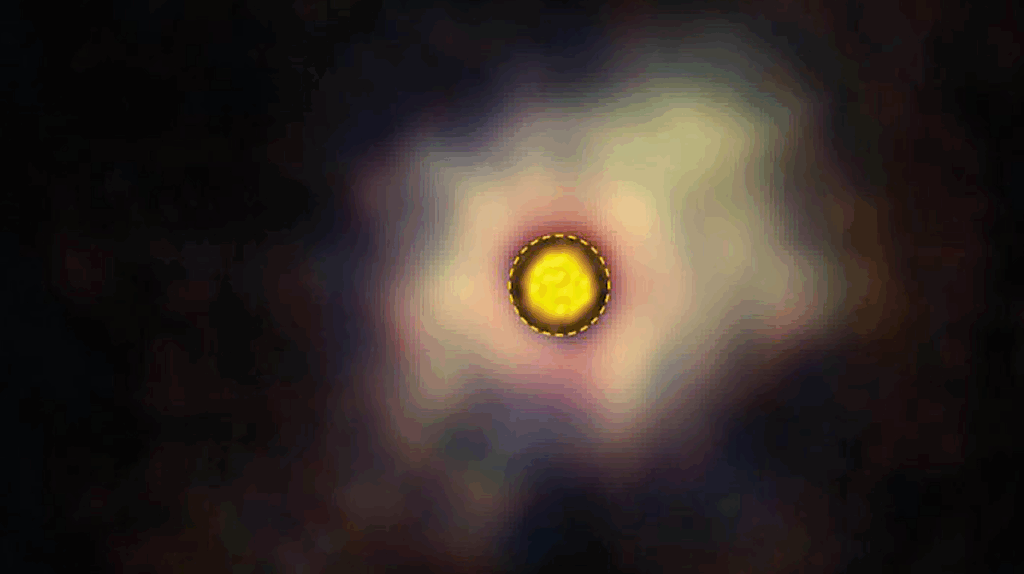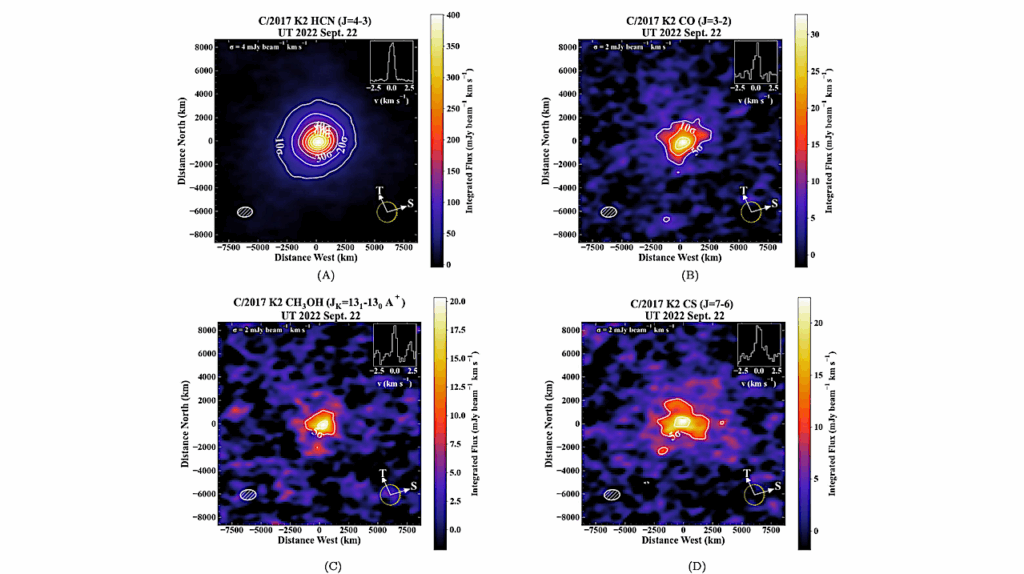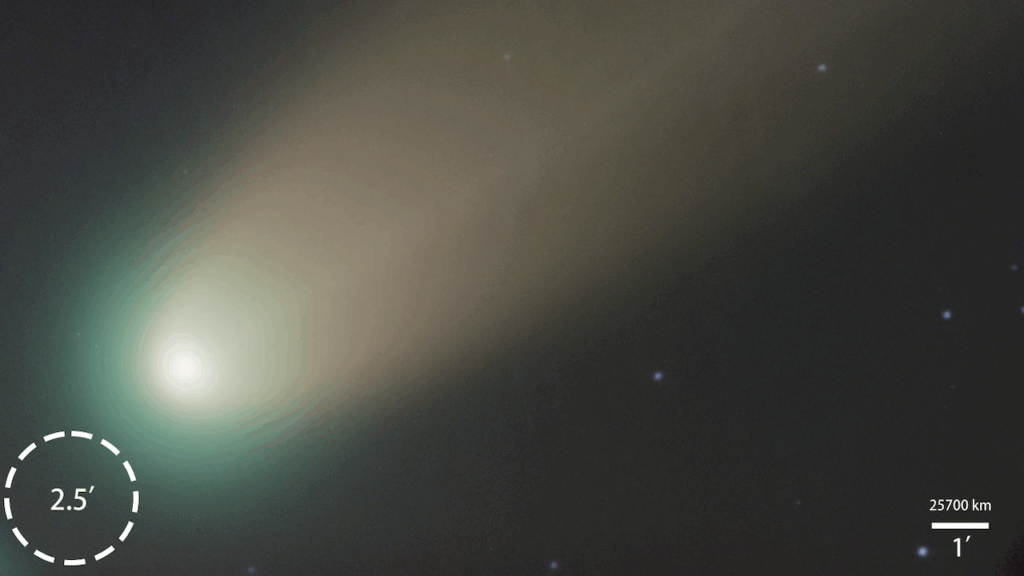Solid-state Formation In A H3CCCH + OH Cocktail Under Dark Cloud Conditions

A number of recent experimental studies have shown that solid-state complex organic molecules (COMs) can form under conditions that are relevant to the CO freeze-out stage in dense clouds.
In this work, we show that alcohols can be formed well before the CO freeze-out stage (i.e., in the H2O-rich ice phase). This joint experimental and computational investigation shows that the isomers, n- and i-propanol (H3CCH2CH2OH and H3CCHOHCH3) and n- and i-propenol (H3CCHCHOH and H3CCOHCH2), can be formed in radical-addition reactions starting from propyne (H3CCCH) + OH at the low temperature of 10 K, where H3CCCH is one of the simplest representatives of stable carbon chains already identified in the interstellar medium (ISM).
The resulting average abundance ratio of 1:1 for n-propanol:i-propanol is aligned with the conclusions from the computational work that the geometric orientation of strongly interacting species is influential to the extent of which ‘mechanism’ is participating, and that an assortment of geometries leads to an averaged-out effect. Three isomers of propanediol are also tentatively identified in the experiments. It is also shown that propene and propane (H3CCHCH2 and H3CCH2CH3) are formed from the hydrogenation of H3CCCH. Computationally-derived activation barriers give additional insight into what types of reactions and mechanisms are more likely to occur in the laboratory and in the ISM.
Our findings not only suggest that the alcohols studied here share common chemical pathways and therefore can show up simultaneously in astronomical surveys, but also that their extended counterparts that derive from polyynes containing H3C(CC)nH structures may exist in the ISM. Such larger species, like fatty alcohols, are the possible constituents of simple lipids that primitive cell membranes on the early Earth are thought to be partially composed of.
D. Qasim, G. Fedoseev, T. Lamberts, K.-J. Chuang, J. He, S. Ioppolo, J. Kästner, H. Linnartz
(Submitted on 13 May 2019)
Comments: Published in ACS Earth and Space Chemistry, Complex Organic Molecules (COMs) in Star-Forming Regions special issue
Subjects: Chemical Physics (physics.chem-ph); Astrophysics of Galaxies (astro-ph.GA); Solar and Stellar Astrophysics (astro-ph.SR)
DOI: 10.1021/acsearthspacechem.9b00062
Cite as: arXiv:1905.05063 [physics.chem-ph] (or arXiv:1905.05063v1 [physics.chem-ph] for this version)
Submission history
From: Danna Qasim
[v1] Mon, 13 May 2019 14:41:44 UTC (2,187 KB)
https://arxiv.org/abs/1905.05063
Astrobiology, Astrochemistry



